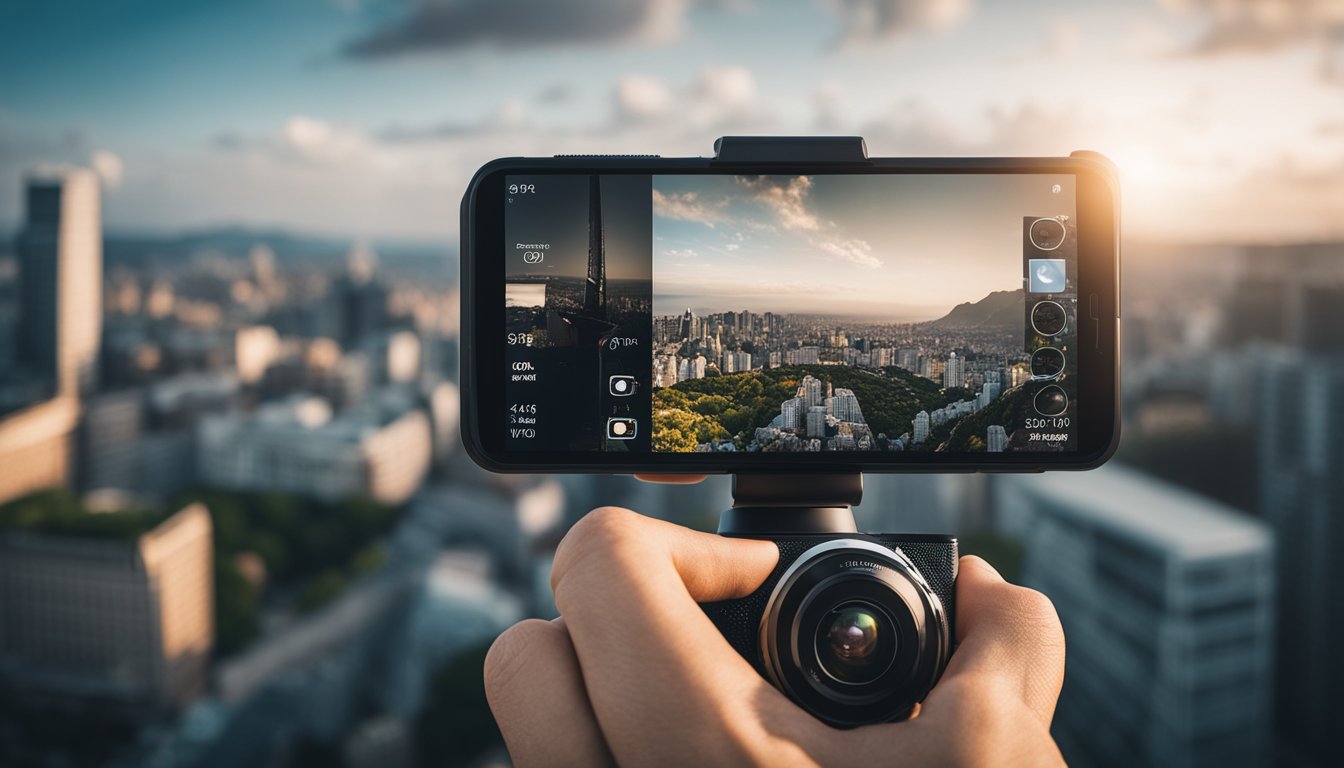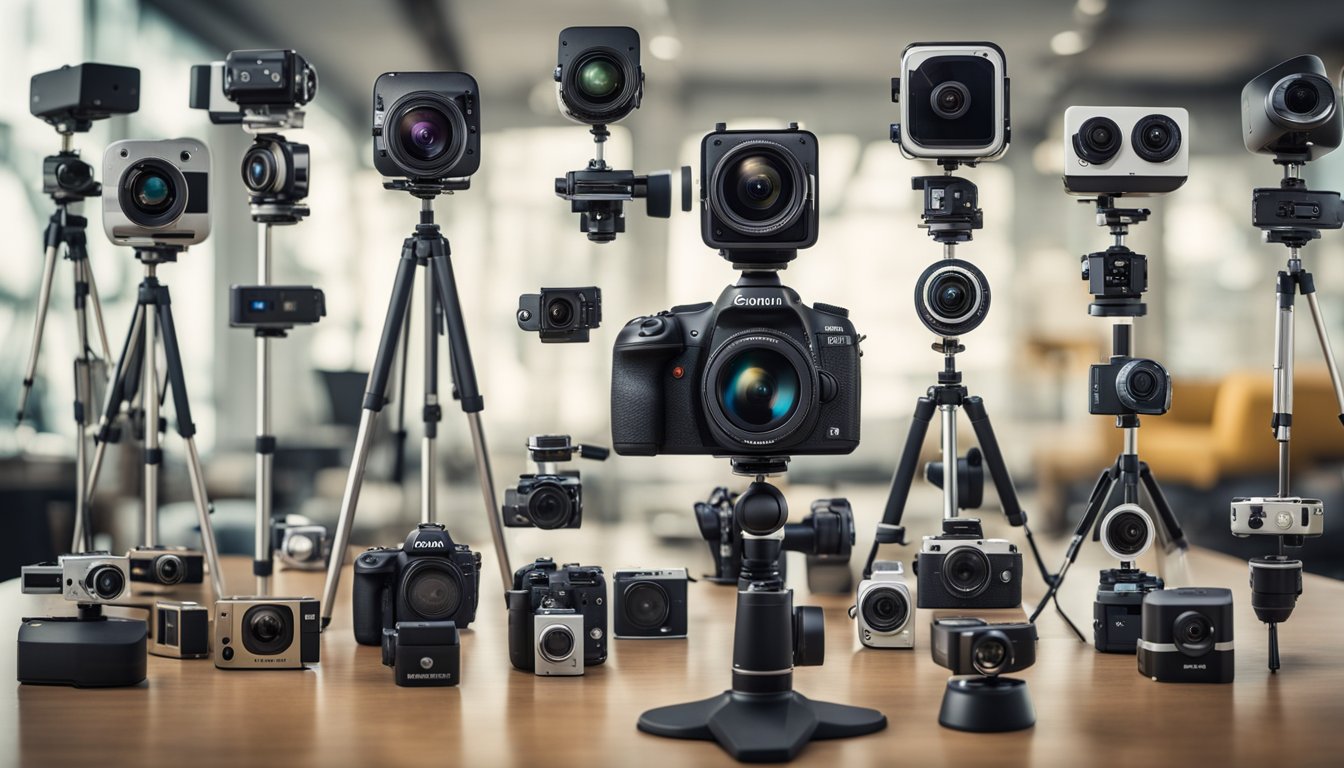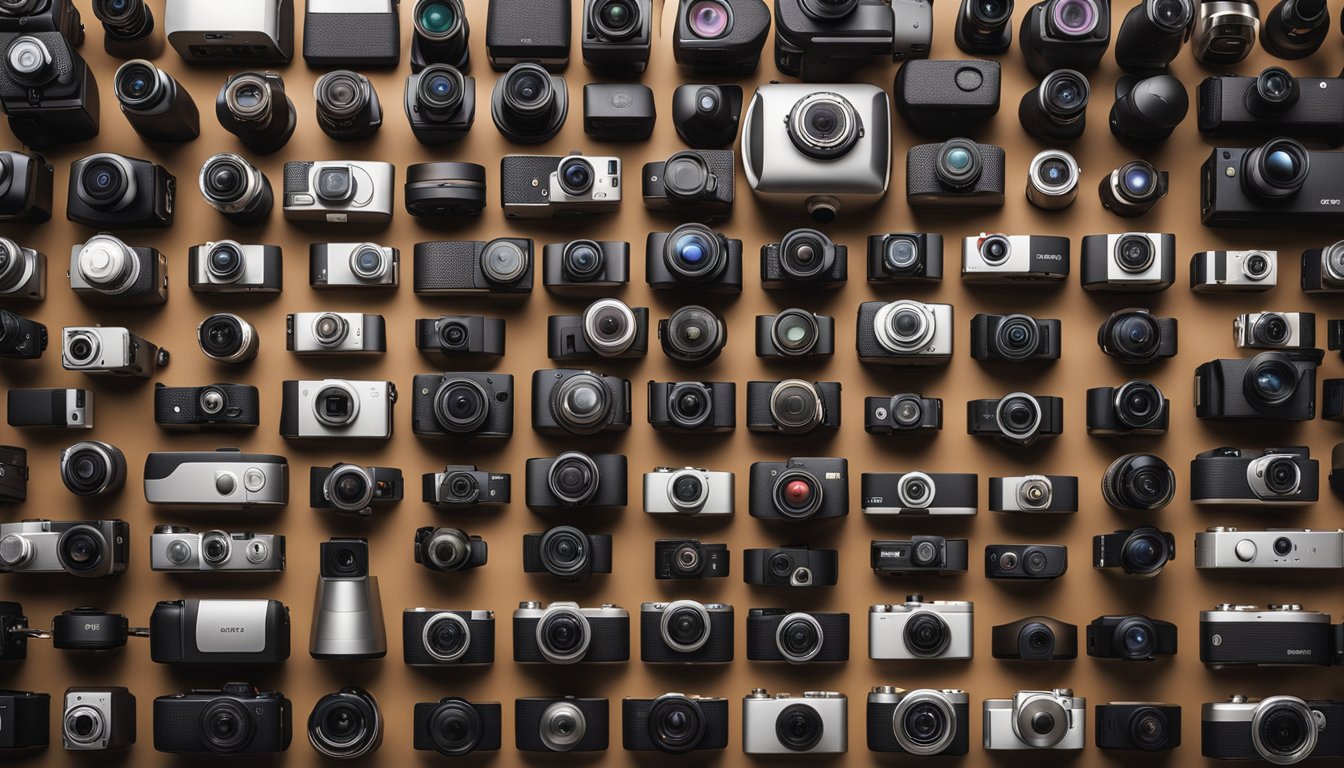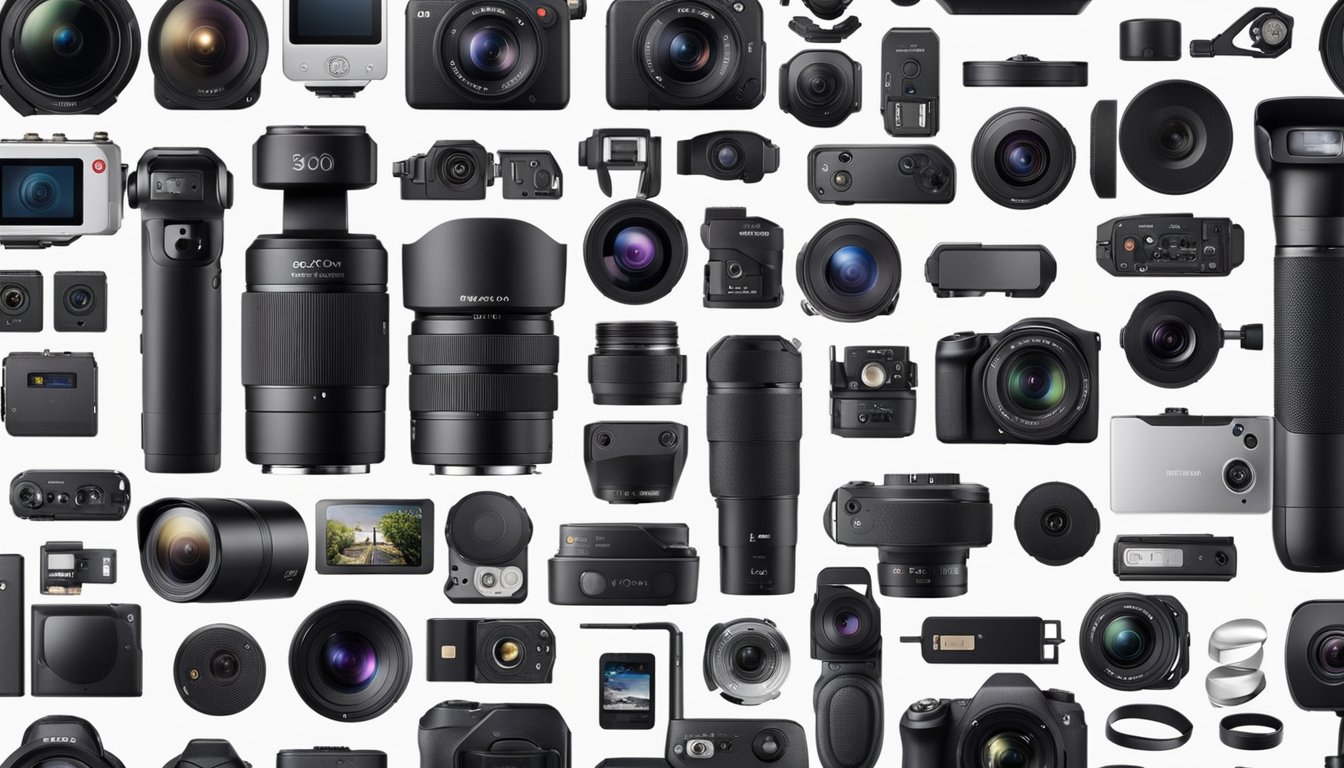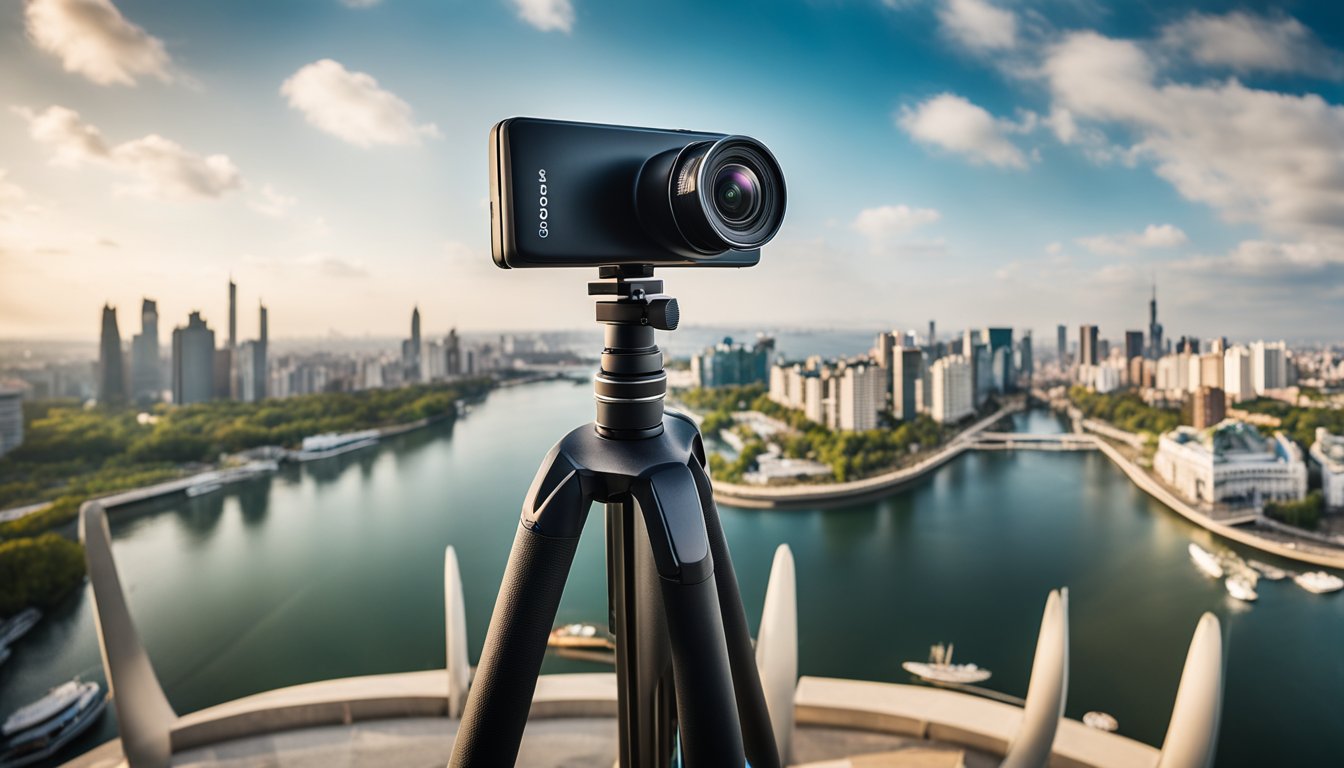In the world of photography and videography, 360 cameras have stirred quite the buzz, promising an immersive visual experience that traditional cameras can’t match. With your interest piqued, you may wonder if investing in one is worthwhile. These devices capture every angle of the scene around them, allowing for dynamic and interactive photos and videos. Providing more than just panoramic shots, 360 cameras serve up a complete spherical image of the world, making them ideal for capturing landscapes, events, and even for virtual reality content. Not to mention the ease of sharing these experiences on social media platforms that support 360 content.
However, it’s important to weigh the pros and cons. A 360 camera might dazzle with its capability to create virtual tours or action-packed interactive videos, but consider if these features align with your needs. While the versatility is impressive, factors such as cost, the learning curve for new editing software, and the practicality of 360 content in your day-to-day use should guide your decision. Understanding the various types of 360 cameras available, from consumer-friendly options to professional rigs, is also crucial in making an informed choice about whether this technology fits into your creative toolkit.
Key Takeaways
- 360 cameras offer an immersive experience and suit diverse uses, from social media to virtual reality.
- Assessing the pros and cons, including costs and usability, ensures 360 cameras meet your specific needs.
- Choosing the right type from the broad range available is key to maximizing the benefits of 360-degree technology.
Evolution of the 360 Camera
360-degree cameras have transformed the way you capture and experience the world. From the dimly lit rooms of the earliest photographers to the palm of your hand, these devices have seen a ground-breaking journey. Let’s dive into their evolution.
From Traditional Cameras to 360-Degree Cameras
Traditional cameras have been your window to the past, freezing moments in time with a single, static perspective. In contrast, 360-degree cameras enable you to capture every angle in a spherical panorama, placing you in the center of the scene. The leap from traditional cameras to these immersive devices represents a significant shift in how you record and share experiences. Giants like Ricoh and GoPro have been instrumental in this transition, bringing 360-degree imagery to consumers and professionals alike.
Key Technological Advances
Resolution and image quality have always been paramount in photography. With each new 360-degree model, from the Ricoh Theta to the latest Insta360 cameras, these benchmarks have soared to new heights. Technological advancements mean you’re no longer choosing between an immersive experience and high definition—now, you can have both.

- Increased Resolution: The crispness and detail of your images have improved dramatically, rivalling that of high-end traditional cameras.
- Improved Sensors: Better sensors allow for superior image quality, even in challenging lighting conditions.
- Software Innovation: Advances in stitching software create seamless panoramas, making it difficult to spot where images are merged.
In the evolution of the 360 camera, you’re witnessing more than just incremental upgrades; you’re experiencing a revolution in visual storytelling.
Exploring 360 Camera Capabilities
https://www.youtube.com/watch?v=HO5fsY_mT4Y&embed=true
Navigating through the capabilities of 360 cameras, you’ll uncover a world where image and video quality, seamless software integration, and social sharing are key. Let’s journey together into how these aspects make 360-degree cameras a compelling choice for capturing moments in a panoramic sweep.
Image and Video Quality
Resolution is a cornerstone of your 360 camera’s performance, vital for crisp images and detailed videos. High-resolution cameras, like the Insta360 X3, produce 360 video that can offer 4K quality or higher, providing an experience that feels true to life. Stabilization technology also plays a critical role, as it counters camera shake and ensures your footage is smooth.
Software Integration and Stitching
Your 360 camera is as powerful as the software it pairs with. Quality software helps seamlessly stitch the images from dual lenses together, making sure the stitch line is near-invisible. Effective integration means that whether you’re a professional or just having fun, the technical side doesn’t become a burden.
Livestreaming and Content Sharing
« Does Tesla Have 360 Camera? Uncovering Model Features
360 Cameras with LiDAR: Unveiling the Future of Immersive Photography »
Bringing events to life in real-time is a game-changer with live-streaming. Cameras like the Samsung Gear 360 allow you to broadcast in the moment, inviting your audience to a panoramic experience as things unfold. Sharing content has never been easier, too, with platforms integrating support for immersive 360-degree content.
By looking at these facets, the capabilities of your 360 camera can truly enhance your digital storytelling, whether you’re sharing with friends or broadcasting to a global audience.
Pros and Cons of 360 Cameras
https://www.youtube.com/watch?v=r1haBj2p0uU&embed=true
When you’re considering whether a 360 camera is worth your investment, you should weigh both the unique advantages they bring to photography and videography against the potential limitations they may have.
Advantages of Owning a 360 Camera
- Dynamic Range: You can expect to capture scenes with a broad range of tones, from the brightest highlights to the darkest shadows, offering a realistic viewing experience.
- Image Stabilization: Many 360 cameras come equipped with excellent image stabilization, ensuring that your videos remain smooth even when you’re on the move.
- Framing Flexibility: With a 360 camera, you don’t have to decide on the framing during the moment of capture. You have the freedom to choose the best angle afterward during editing.
When shooting in low light conditions, the larger the sensor and the higher the quality of the lens, the better the low light performance generally is. While not all 360 cameras excel in low light, there are models with impressive capabilities in these conditions.
Limitations and Drawbacks
- Resolution: Since the image or video is spread across a 360-degree field, the resolution on a particular section of the sphere may be lower compared to a standard camera with a similar resolution.
- Complex Editing: Working with 360 content often requires special editing software, and there is a learning curve when it comes to adjusting your mindset from flat imagery to spherical.
Even top-tier 360 cameras may have limitations when it comes to dynamic range and low light performance, which could impact the quality of your shots in certain environments.
Different Types of 360 Cameras
When you’re exploring the world of 360 cameras, you’ll find a range of options tailored to casual users and seasoned professionals alike. Understanding your needs will help you navigate between the accessible consumer-friendly options and the more advanced professional camera systems.
Consumer-Friendly Options
Consumer 360 cameras are designed for your convenience, balancing quality and ease of use at a more budget-friendly price point. One popular model is the GoPro Max, which captures vivid 360 footage and is rugged enough for your adventures. If you’re looking for something compact with powerful capabilities, the Ricoh Theta Z1 stands out with impressive image quality and manual control features. For those interested in delving into virtual reality, the Insta360 series offers cameras that are not only portable but also come with robust editing software to enhance your 360-degree photos and videos.
- GoPro Max: Rugged design, 5.6K video capture
- Ricoh Theta Z1: High-resolution sensors, DSLR-like exposure control
- Insta360: User-friendly, with a suite of editing tools
Professional 360 Camera Systems
For professionals seeking advanced features and higher-quality output, professional 360 camera systems provide exceptional results. Cameras such as the QooCam 8K allow for detailed 8K video, offering the clarity needed for immersive experiences and commercial quality work.
- QooCam 8K: Capture 8K video, fine detail for a professional finish
Whether you’re a hobbyist looking to capture your moments or a professional aiming to produce high-quality VR content, there’s a 360 camera system designed to meet your demands.
360 Cameras in Action and Adventure
https://www.youtube.com/watch?v=DQJsjzIpbhw&embed=true
When you’re out conquering rugged trails or surfing colossal waves, a 360 camera enables you to record every angle of your epic experiences. Unlike traditional action cams, these devices offer a complete field view that ensures no moment is missed.
Capture Your Thrills
Imagine reliving your most breathtaking moments in full panoramic detail. With a 360 camera, you can preserve every bit of action and excitement. Features like OverCapture or reframing allow you to extract standard video angles from the larger panoramic shot post-adventure, so you can focus on the highlight moments without losing the surrounding context. This means you’re effectively carrying a director’s toolkit in your pocket.
Durable Design for Extreme Conditions
Your thirst for adventure demands equipment that’s as resilient as you are. Many 360 cameras boast a rugged build and come waterproof or have compatible cases, like the GoPro Max, so you can dive into your adventures without hesitation. For extreme conditions, cameras like the Garmin VIRB 360 provide robustness you can rely on. It’s imperative to check whether your 360 camera requires additional protective housing to make it waterproof, or if it comes ready for your underwater excursions out of the box.
Using a 360 Camera for Virtual Reality
https://www.youtube.com/watch?v=IFG2h8cFBQ4&embed=true
When you step into the realm of virtual reality (VR), a 360 camera becomes a powerful tool. It lets you create content that offers an immersive experience, viewable on VR headsets.
Creating VR Content
360 video is the backbone of 3D VR content. Your 360 camera allows you to capture video in all directions, giving viewers a spherical view of the environment. To produce effective VR content:
- Ensure lighting is evenly distributed to avoid glare and shadows that can break immersion.
- Capture high-resolution video to handle close-up details when viewed in a VR headset.
- Consider the placement of your camera; it should be positioned to simulate a natural viewing angle for the most lifelike experience.
VR Headsets Compatibility
Compatibility with VR headsets is crucial for your audience to enjoy the immersive content you produce. Here’s what you need to consider:
- Resolution and Frame Rate: Your 360 camera should record at a resolution and frame rate that is supported by popular VR headsets.
- File Format: Make sure the output file format from your 360 camera is compatible with VR software and devices. Most headsets support standard video formats like MP4, but double-check for any specifics.
Using a 360-degree camera can give you an edge in creating VR content. Ensure it pairs well with VR headsets to deliver the fascinating world of virtual reality to your viewers.
Unique Features of 360 Cameras
https://www.youtube.com/watch?v=XDzbacsEjHI&embed=true
When you pick up a 360 camera, you’re not just getting a new gadget; you’re unlocking creative potential that traditional cameras simply can’t match. Here’s a dive into the innovative features that make 360 cameras a game-changer for your photography and videography adventures.
Overcapture and Reframing
With Overcapture, you have the freedom to shoot first and point later. Imagine capturing everything in a full 360-degree view and then selecting your perfect shot from any angle in post-production. Take the Insta360 X3, for example; it allows you to tap into this feature, empowering you with the tools to craft the ideal frame for your story after the moment has passed.
Reframing is akin to having multiple cameras rolled into one. You’re not just stuck with the initial perspective you shot in; you can pivot, zoom, and pan across your 360-degree footage to highlight different aspects, perfect for when you want to direct your audience’s attention to specific sights and moments.
Modular Camera Systems
A modular camera system brings versatility to your toolkit. Cameras like the Insta360 One R showcase modular design excellence by giving you the ability to swap out lenses and sensors depending on the shoot requirements. One minute you could be shooting with a 4K wide-angle lens, and the next, you could swap in the 360-degree camera module to immerse your viewers in a panoramic experience.
Think of these systems as the Swiss Army knife of cameras; they can transform to suit your needs, whether you’re vlogging, capturing an adventure, or adding depth to your professional portfolio. Modular cameras like Evo even let you switch between 180 and 360-degree modes, ensuring you never miss a shot regardless of the environment you’re in.
Tips for Potential Buyers
https://www.youtube.com/watch?v=k_xGcuy4_fs&embed=true
When you’re in the market for a 360 camera, the sheer variety of options can be overwhelming. Your focus should be on features that cater to your specific needs and getting the best value for your money.
What to Look for in a 360 Camera
Sensor Size and Resolution: A larger sensor can capture more light and generally produce better image quality, so pay close attention to the sensor specifications. Resolution is equally crucial as it determines the detail of your 360 photos and videos. Look for a resolution that strikes a good balance between quality and file size, especially if you’re interested in high-resolution imaging.
Image Quality and Stabilisation: Clear and stable images are a must, so opt for a camera with robust stabilisation to reduce blurriness in your shots. Evaluate image quality by considering both the sharpness of the pictures and the color accuracy.
Best Practices for Comparison Shopping
-
Top Picks: Start by identifying a few top picks based on recommendations from trusted sources and user reviews. This narrows down your choices to a few quality options.
-
Price: While comparing prices, remember that the most expensive camera isn’t always the best. Carefully assess whether the hardware you’re getting is worth the cost.
-
Hardware: Beyond the camera itself, check what kind of accessories or additional hardware might be necessary, as this can add to the total price.
By keeping these factors in mind, you’re positioning yourself to find a 360 camera that not only fits your budget but also meets your expectations in terms of performance and quality.
Social Media and 360 Content Creation
https://www.youtube.com/watch?v=FlFd53C8eoU&embed=true
Exploring the world of 360 cameras opens up new vistas for your social media content. These devices not only add depth and immersion to your posts but also let you create experiences that traditional image or video content can’t match.
Sharing on Platforms Like YouTube and Facebook
YouTube and Facebook have become great places for sharing 360 videos. Both platforms support the immersive format, allowing you to post content that viewers can explore by dragging their mouse or tilting their phone. This adds a layer of interactivity to your posts that can engage your audience in a novel way.
- YouTube: You can upload 360 videos just like you would any other video. Once uploaded, YouTube processes it, making sure users can explore every angle.
- Facebook: Similarly, Facebook allows you to share 360 videos on pages, in groups, or on your timeline, providing an enriching visual experience for friends and followers.
Trending 360 Content
The trend toward 360 content on social media doesn’t stop at videos. Virtual tours, 360-degree images, and even live streams have all gained traction. This content can transport viewers to the centre of a story or location, which is perfect for:
- Real Estate: Offering virtual tours of properties.
- Travel and Events: Showing immersive recaps of places and experiences.
- Education: Creating interactive learning experiences.
Trending 360 content is particularly engaging on platforms like Instagram, where the focus on visuals makes 360-degree stills stand out. Remember to create content that is more than just novel; it should offer real value to stand out in a crowded social media landscape.
Integration with Other Devices and Accessories
Selecting a 360 camera isn’t just about the camera itself; it’s about how it fits within the ecosystem of devices and accessories you already own or plan to acquire. The ability to integrate smoothly with your phone, drones, and other accessories can notably enhance your filming experiences and capabilities.
Compatibility with Phones and Drones
When it comes to phones, most 360-degree cameras now offer companion apps, which usually are available for iOS and Android devices. These apps not only allow for the remote control of the camera but also for immediate viewing and editing of captured footage. For drones, compatibility is key for capturing sweeping aerial 360-degree content. Make sure your camera is compatible with the drone’s mounting system or is recognized by third-party support applications that facilitate control and stabilization while in-flight.
Must-Have Accessories for Your 360 Camera
Your 360 camera can be significantly more versatile with the right accessories. Here’s a brief list of essentials:
- Tripods & Selfie Sticks: A sturdy tripod is crucial for stability, especially for video spheres. A selfie stick that disappears in the final shot can make your footage more immersive by creating the illusion that the camera is floating.
- SD Cards: High-resolution footage means large file sizes, so invest in a high-capacity, high-speed SD card to ensure you don’t run out of space or encounter lag during recording.
- Wi-Fi & GPS: Wi-Fi connectivity allows for the swift transfer of files to your devices, while integrated GPS can tag your photos and videos with location data, enhancing the storytelling aspect of your captures.
Accessorizing effectively expands the functionality and potential of your 360-degree camera, ensuring you’re equipped to capture immersive content in nearly any situation.
Concluding Thoughts on 360 Cameras
When you first consider 360-degree cameras, it might feel like venturing into uncharted waters. But with today’s technology, they’re quite approachable for beginners and hobbyists alike. Why? Because numerous guides and tutorials are readily available to help you master this immersive form of photography.
-
Ease for Beginners: Starting with a 360 camera isn’t daunting. With intuitive designs like the Insta360 ONE X2, you’re equipped with a tool that’s user-friendly and syncs well with smartphones for easy control.
-
Photography & Video: These devices don’t just capture flat images; they create interactive environments. Imagine showcasing homes or natural landscapes in 360 videos where viewers can look around as if they were there.
-
Interactive Content: You can elevate your content by offering a more interactive experience. Your audience can explore every angle, creating a sense of presence that traditional videos just can’t match.
To keep your content fresh and intriguing, embracing a 360 camera can be a smart move. It might not replace your standard camera, but it will definitely add another layer to your creative toolkit. Remember, with a little practice and support from the vast array of online resources, you’ll be crafting breathtaking 360-degree content in no time.
Frequently Asked Questions
https://www.youtube.com/watch?v=_4hlrNA2xUg&embed=true
When considering a 360 camera, you’re likely to have questions about their functionality, cost-value ratio, and specific use cases. Let’s address some of the most common queries.
What are the benefits of having a 360 camera in a vehicle?
Installing a 360 camera in your vehicle can enhance your driving experience by providing a comprehensive view around your car, which is helpful in tight parking situations and can also serve as an unbiased witness during road incidents.
How does the price of a 360 camera compare to its features?
The cost of a 360 camera often correlates with its features such as image quality, durability, and additional tech like live streaming capabilities. Higher-priced models typically offer better resolution and more advanced features.
What should I look for when choosing a 360 camera for racing?
For racing, you should look for a 360 camera that offers high frame rates for smooth footage, robust mounting options, and resistance to vibrations and extreme conditions.
Can 360 cameras be used effectively for security purposes?
Yes, 360 cameras can be effective for security purposes as they provide a panoramic view which minimizes blind spots and can cover an area that would otherwise require multiple cameras.
How do user experiences with car-mounted 360 cameras typically rate?
Users often rate car-mounted 360 cameras favorably for their ability to capture all angles around the vehicle, providing a complete picture and peace of mind during both driving and parking.
What are some potential drawbacks to using 360 degree cameras?
One potential drawback of using 360 degree cameras is their dependency on software for stitching images, which can sometimes result in stitching errors. Additionally, the wide-angle lenses might have lower resolution at the edges compared to the center of the image.

